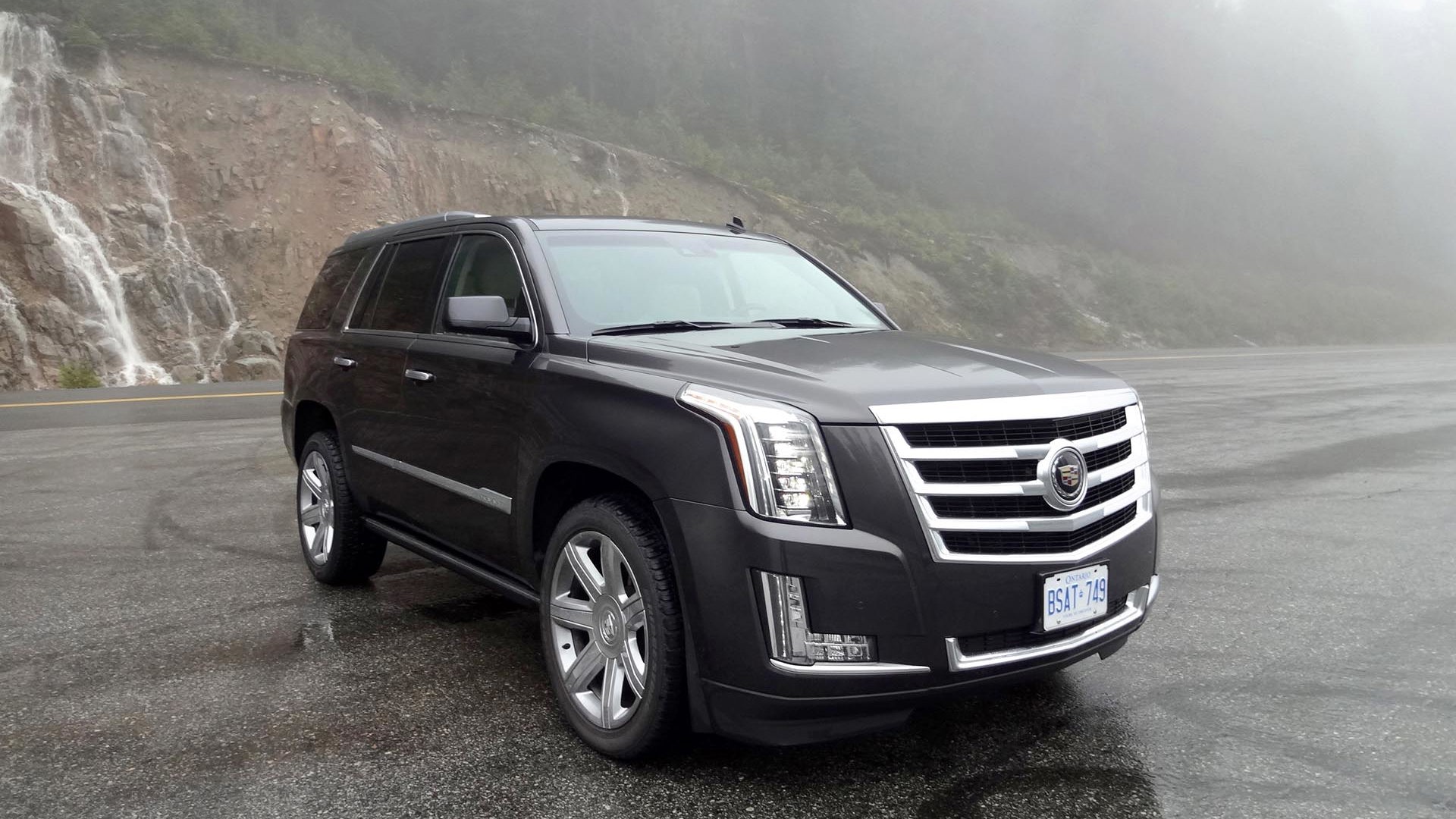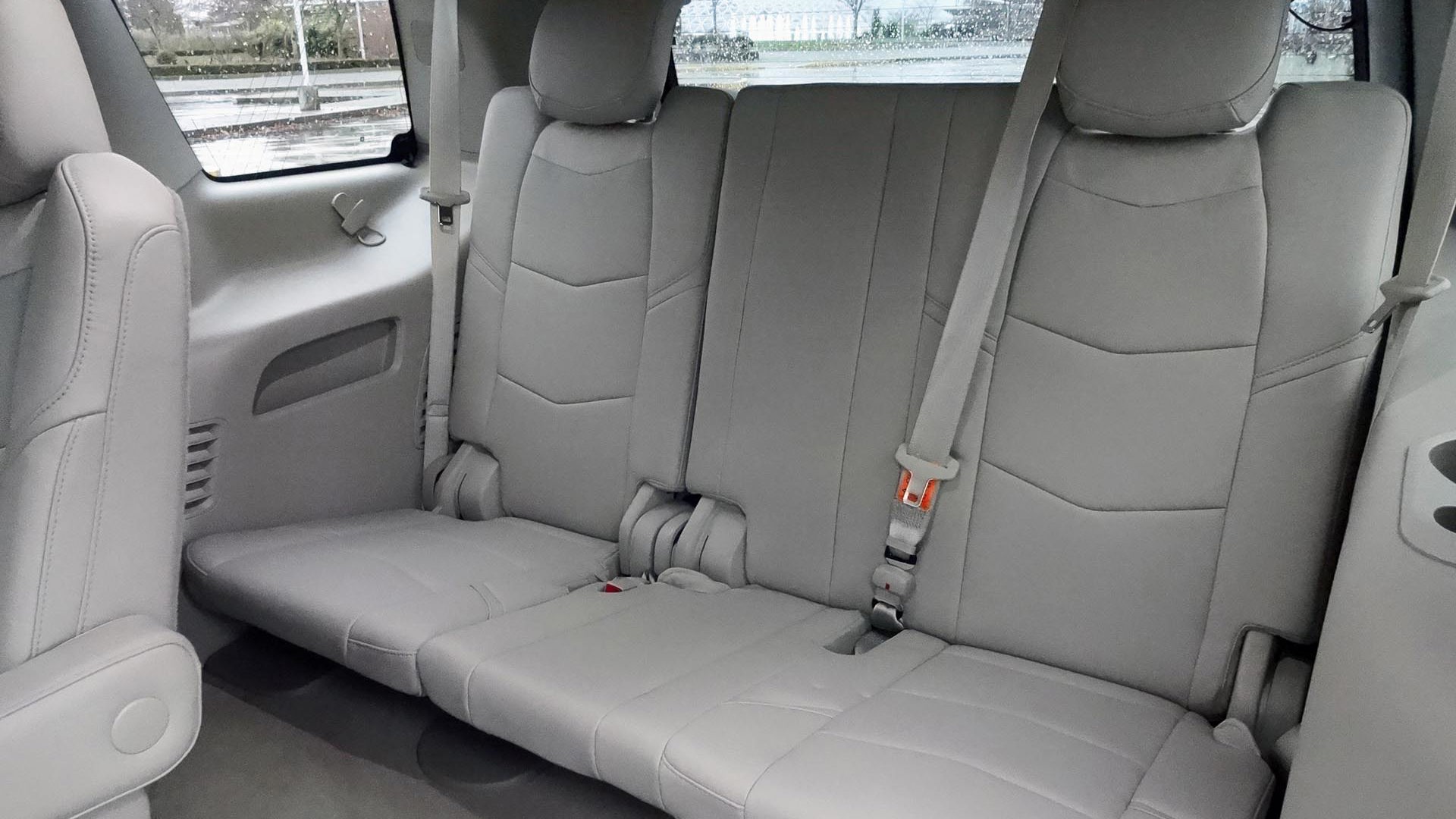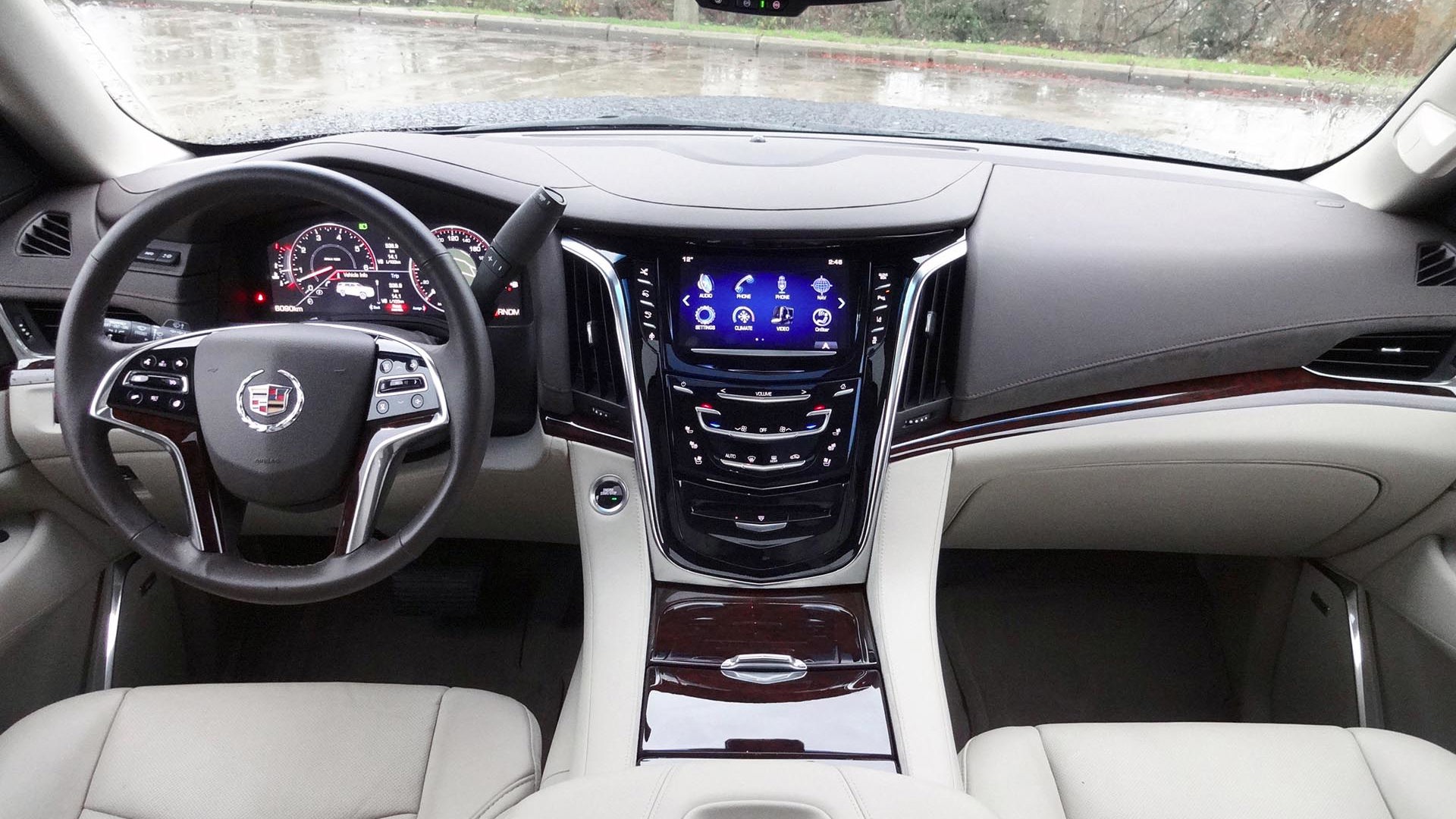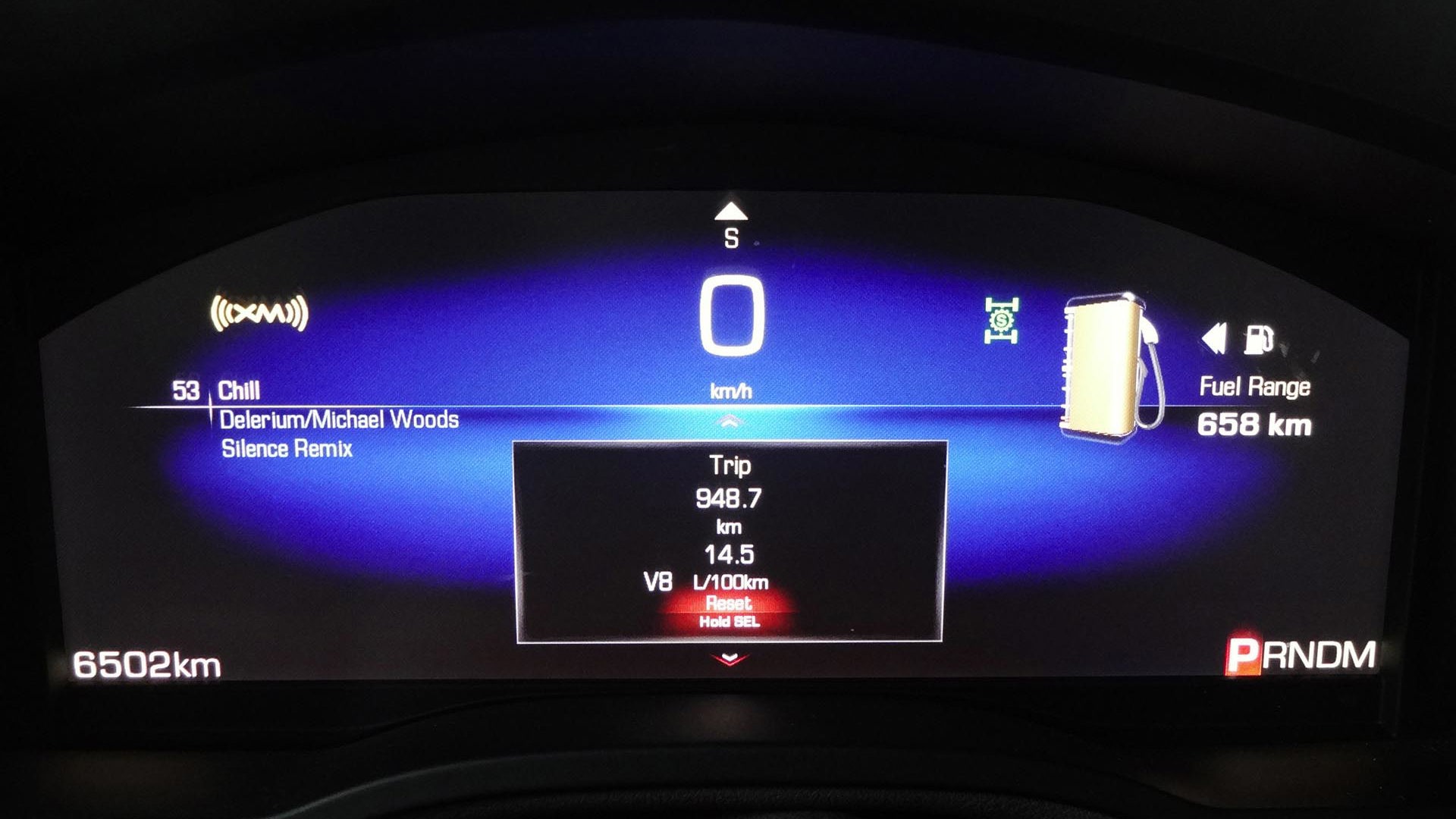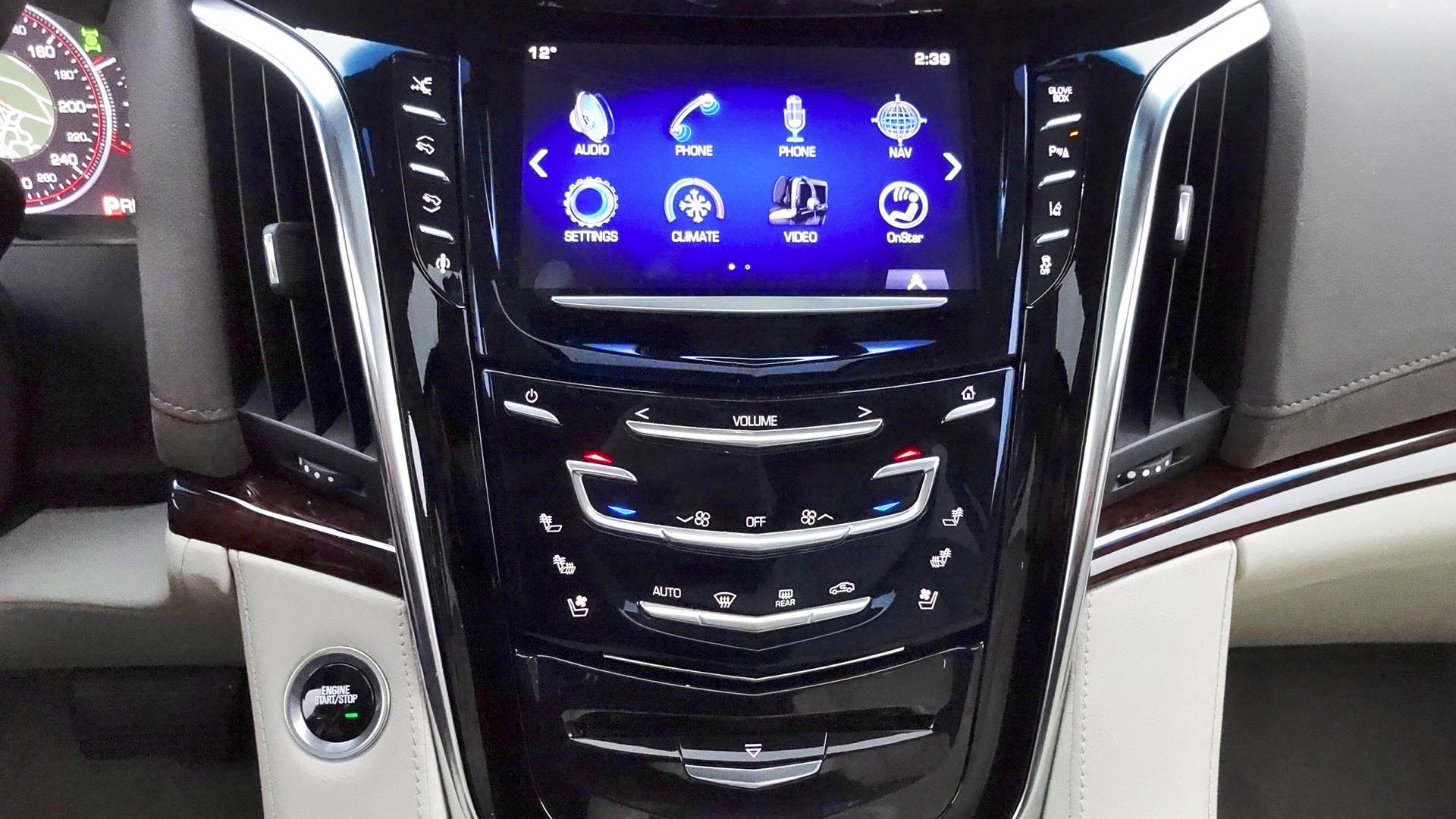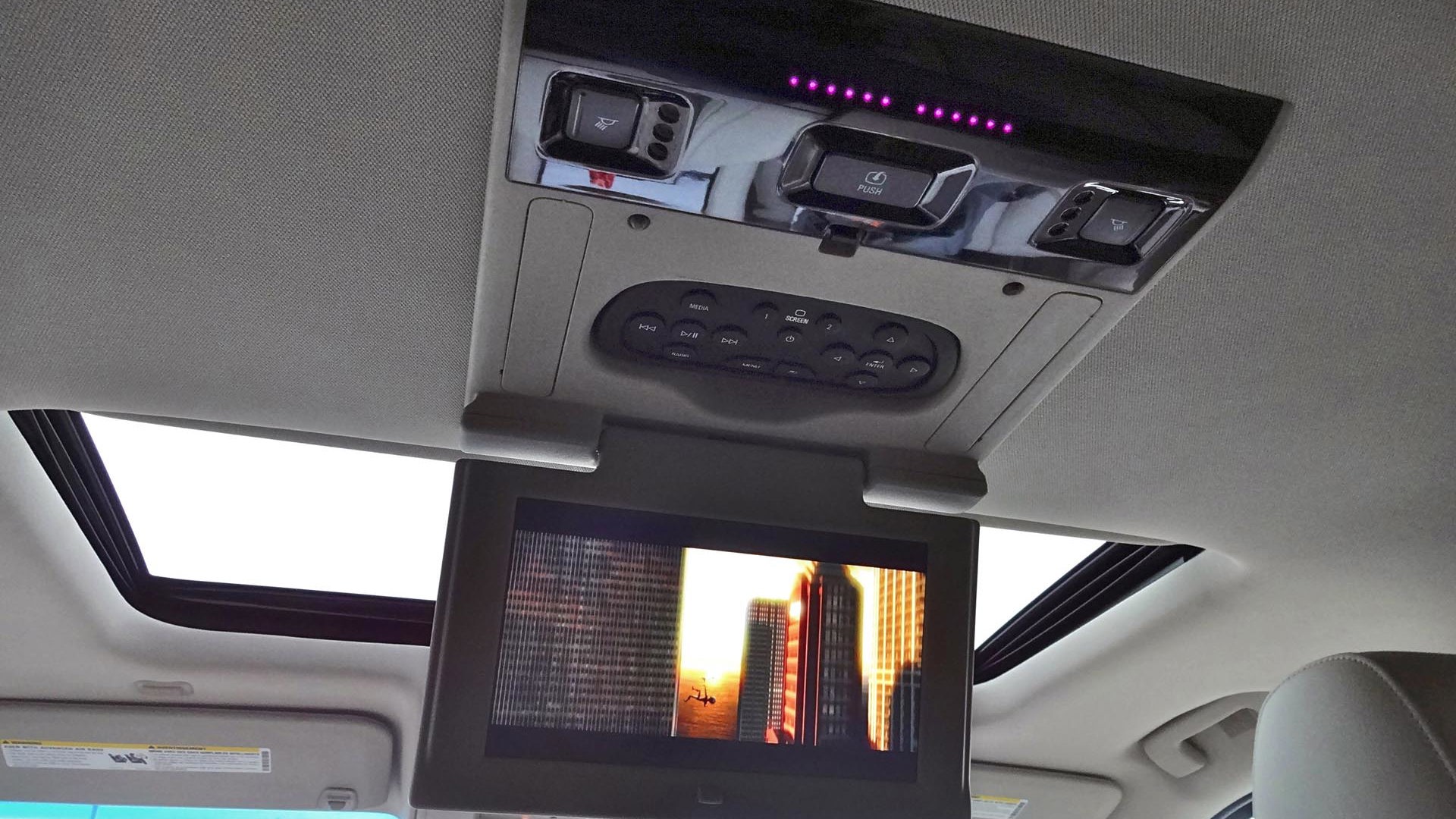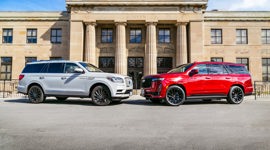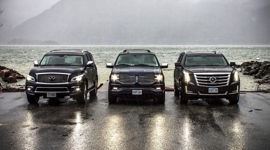It's tempting to say that you either "get" the Cadillac Escalade, or you don't. Indeed there's some truth to it – GM's king of bling is designed to attract attention and it does that in spades. People stare at it whether in envy or contempt, and while that's just dandy if you're the kind of person who likes to show off, it can be a bit embarrassing if you're more comfortable blending in.
North American sales figures reflect the Escalade's character rather nicely: In the U.S., where the stereotypes run to brashness and self-promotion, the Escalade has been the top-selling luxury SUV by a good chalk over the past couple of years. In Canada, where the stereotypes run more to modesty and pragmatism, it has lagged behind the sensibly Germanic Mercedes-Benz GL-Class.
Give the Escalade a week or so and you might find yourself really "owning" it.
But here's the thing: While initially you might feel a little self-conscious at the thought of driving such an ostentatious beast, the Escalade has surprising charm up close, and it does a good enough job isolating you from the world outside that after a couple of days swaddled in its quiet, spacious, leather-lined comfort the question of what other people think rather ceases to matter. Give the Escalade a week or so and you might find yourself really "owning" it – climbing out and looking around for an audience, then punching the lock button a couple of times to blip the alarm before you swagger across the parking lot to the local coffee shop. Yeah it's me, and that's my Escalade. Deal with it.
Actually, "deal with it" just about sums up what Cadillac Canada might be saying to the folks over at Mercedes-Benz about now, because for 2015 the Escalade has been completely redesigned (it's now based on the GMT K2XX platform), and as might be expected for a vehicle that sells largely based on image this has given it a healthy sales boost. Escalade sales perked up immediately when the new version was released, and then in January 2015 they surged ahead by a whopping 459 percent to pull ahead of the GL-Class by 153 units to 142 (for perspective, that's a better monthly sales number than was posted by any of the Escalade's less-expensive siblings over at the Chevrolet and GMC dealerships).
It helps that the redesign has moved the Escalade stylistically forward and given it a new level of sophistication without spoiling its iconic character. The 2015 Escalade is blockier and more angular than the old version, but at the same time it's distinctly sleeker, with a prominent new horizontal beltline crease making it look long and lean. Other highlights include architecturally-inspired LED front character lights, almost full-height vertical LED taillights, and a bold new grille. You can judge for yourself from the photos, but whether you "get" it or not you've got to admit it looks good for such a big SUV. On a purely personal level I like how Cadillac's "Art and Science" design language creates a look that's bold and assertive without being angry-looking. After all, when you're this big and imposing, who needs an angry, snarling grille? I'm kind of over angry and snarly anyway.
Inside, the latest Escalade is well-assembled and uses quality materials, including lashings of leather, tasteful suede inserts and real woodgrain trim. Stylistically it's clean and modern, and the first two rows are unreservedly comfortable, with supportive bolstering, plenty of space to stretch out, and heated seats all around (the driver and front passenger get seat cooling as well for those hot summer days). As my wife noted during a Whistler ski trip, "It's a big beast, but it's certainly comfortable."
Nice touches in my test vehicle included a heads-up display and Cadillac's excellent haptic-feedback Safety Alert Seat, which vibrates on the appropriate side to warn you if you're drifting out of your lane on the highway, approaching obstacles when parking, and so on. It's attention-getting without being intrusive, and helps maintain the cabin as an oasis of calm, rather than the usual video-arcade cacophony of beeping you get with most driver assistance systems.
Standard features include such things as tri-zone automatic climate control, configurable digital instrument display, active noise cancellation, power adjustable pedals, heated tilt-and-telescoping steering wheel, surround-view backup camera, keyless entry with pushbutton start, and a brilliant sounding 16-speaker Bose audio system with Bluetooth connectivity, voice-activated navigation, satellite radio, auxiliary input, five USB inputs, and a nifty hidden storage bin behind the touchscreen for your electronic devices. A big console bin and lots of other smaller cubbies round out the plentiful storage.
Not everything is perfect inside the Escalade, however: There's not a lot of cargo room when the third-row seats are in place (only 430 L, which expands to 1,461 L with the seats stowed), and the third-row seats themselves are no more than adequate (although the power-actuated seat operators are very convenient). You can fit adults back there but legroom is tight, so those who'll be using the rearmost seats on a frequent basis may want to check out the long-wheelbase Escalade ESV. Up front, the touch-sensitive centre-stack and infotainment controls are slick in concept but somewhat finicky in practice – the haptic feedback for the controls isn't all that effective or immediate, and the screen can be laggy when responding to commands. As well, Cadillac's CUE infotainment interface is complicated and less-than-intuitive, so I often found my attention sorely divided between trying to drive and trying to figure out the menu structure. That said, the system is richly featured, and a couple weeks of familiarization will likely go a long way towards figuring out most of the basic day-to-day commands.
I'm less inclined to forgive a few of the Escalade's niggling hardware details. These include the oversize 1990s-style column shifter and the fiddly twist-to-operate wiper control on the turn-signal stalk (I prefer a right-hand stalk that I can easily flip to activate the wipers, but of course there's a shifter on that side). I was also unimpressed by the somewhat flimsy cupholder lid on the console, and the rather brutal blind spots imposed by the substantial A-pillars and large mirror-mounts.
Underpinning the 2015 Escalade's luxury is a revised version of a mostly-familiar (and well-proven) drivetrain and suspension. Power – 420 hp and 460 lb-ft of it – is delivered by a big 6.2L V8 that now features direct injection and is hooked up to a six-speed automatic transmission. Canadian Escalades all get four-wheel drive with an auto-locking rear differential, while our neighbours to the south get the choice of rear-wheel drive or all-wheel drive. The engine delivers serious grunt, hauling the unladen Escalade from 0 to 100 km/h in a quick 6.6 seconds and providing a healthy 3,674 kg towing capacity (that's 8,100 lbs for those who still measure in bricks of butter). It also sounds fantastic, with a nice low menacing growl when you put your boot to the throttle. Perhaps most surprising though is that despite all the thrust and growl the big V8 also delivers reasonably good fuel economy, at least partly thanks to its active fuel management system that can deactivate four cylinders when power demands are light (such as when cruising on a level highway).
Official ratings for the 2015 Escalade, using the rigorous new five-cycle test, are 16.2 / 11.4 L/100 km (city/highway), and I achieved pretty much exactly that during the week I had the Escalade, with a mixed average (using the recommended premium fuel) of 14.0 L/100 km over several hundred kilometres, and a highway average of 11.6 L/100 km. I've done worse in certain sporty German sedans. During the Autos.ca Luxury SUV Comparison Test, the Cadillac turned in consumption of 11.8 L/100km even with some long periods of idling, while the V8-powered Infiniti Q80 and the Ecoboost V6-powered Lincoln Navigator used used 17.3 L/100 km and 16.5 L/100km respectively over the same distance. And neither of them is as powerful or awesome sounding as the Cadillac.
The Escalade's suspension features an independent SLA setup in the front (SLA stands for short-long arm, which is a tidier way of saying unequal length double wishbone) and a solid rear axle in the back, with coil springs and a five-link arrangement keeping everything in place – all very proven and durable. The rack-and-pinion steering is electrically assisted and I had no complaints here, although I'll admit I wasn't expecting much in the way of feedback anyway. Suitably huge disc brakes both front and rear provide reasonably confident stopping power.
The Escalade also gets Cadillac's much-ballyhooed Magnetic Ride Control active shocks, which use a magnetic fluid to allow continual, ongoing adjustment of the damper stiffness, thus providing a taut ride when cornering on smooth tarmac and a more forgiving ride over the rough stuff. I've driven other vehicles with similar setups (the Range Rover Evoque and Cadillac ATS both spring immediately to mind) and the technology can be quite impressive, but the reality is that in the Escalade, with its 2,649 kg curb weight and big heavy wheels, there's a limit to what even the best technology can accomplish.
The Magnetic Ride Control does lend the Escalade credible cornering skills, and the ride is car-like to the extent that it's free of the rubbery, floaty feel that plagued big SUVs of yore, but if you're expecting that the Magnetic Ride Control will make the Escalade handle and ride like Cadillac's ATS sedan then you're going to be sorely disappointed. The Escalade may handle and ride a bit better than expected, but it's still unmistakably like driving a big truck, and it exhibits a certain degree of choppiness over irregular pavement.
The Premium trim's massively wide 22-inch wheels also meant that when it really started bucketing down with torrential rain on BC's picturesque but twisty Sea-to-Sky highway, hydroplaning become an issue well within the speed limit, giving me a couple of unsettling moments behind the wheel. I'm not sure whether this had anything to do with the particular tires fitted to my test vehicle (285/45R22 Bridgestone M+S Duelers), but it's not an issue I've ever experienced on that road when driving smaller vehicles with skinnier tires.
When the rain was merely pelting down the Escalade rewarded with an easy-going highway manner, and the Premium trim's various driving aids – including fully adaptive cruise control, forward collision warning, collision avoidance, and lane departure warning – allowed me to arrive relaxed and refreshed (I'm not sure if the rear DVD player counts as a driving aid, but I suspect it might for those with younger kids). The Escalade also features front and rear automatic braking, but this was a little less effective in keeping me relaxed since on a couple of occasions the auto-braking kicked in for non-objects when I was backing up (one was a floor grating in an underground parkade, and the other was a curb I was intentionally backing up to), and the resultant squawking and hard braking gave me an unpleasant adrenaline rush (both times I thought I'd actually gone and hit something).
All-in-all, by the end of a week filled with several hundred kilometres of mountain roads, city streets and suburban thoroughfares, I think I finally came to terms with the Escalade: sure it's big, and sure it's a little brash, but so what? For folks who want near-minivan practicality without the minivan stigma, and who want that practicality wrapped up in luxury-car comfort, the Escalade is just the ticket. It features an admirably high level of standard and available equipment, together with lusty power and stout towing capacity, all while still delivering fuel economy nearly on par with most minivans.
It's not the cheapest luxury-SUV out there, mind you. Indeed at a base price of $84,945 including the $1,700 destination fee (and $92,200 destination in for my Premium test vehicle) the Escalade is downright spendy, pricing out higher than the Infiniti QX80, the Lincoln Navigator and even the Mercedes-Benz GL-Class. But by the time you're shopping in this market, a few thousand dollars in price difference isn't likely to be the main consideration – otherwise you'd opt for a well-equipped GMC Yukon Denali and be done with it. No, in this market it's about style, image and features, and the Escalade has all three in abundance.
| Warranty: 4 years/80,000 km; 6 years/110,000 km powertrain; 6 years/unlimited distance corrosion perforation; 6 years/110,000 km 24-hour roadside assistance Competitors: |
| Model Tested | 2015 Cadillac Escalade Premium |
|---|---|
| Base Price | $90,500 |
| A/C Tax | $100 |
| Destination Fee | $1,700 |
| Price as Tested | $94,280 |
|
Optional Equipment
$1,980 (Power retractable running boards – $1,920; wheel locks – $60)
|
|
